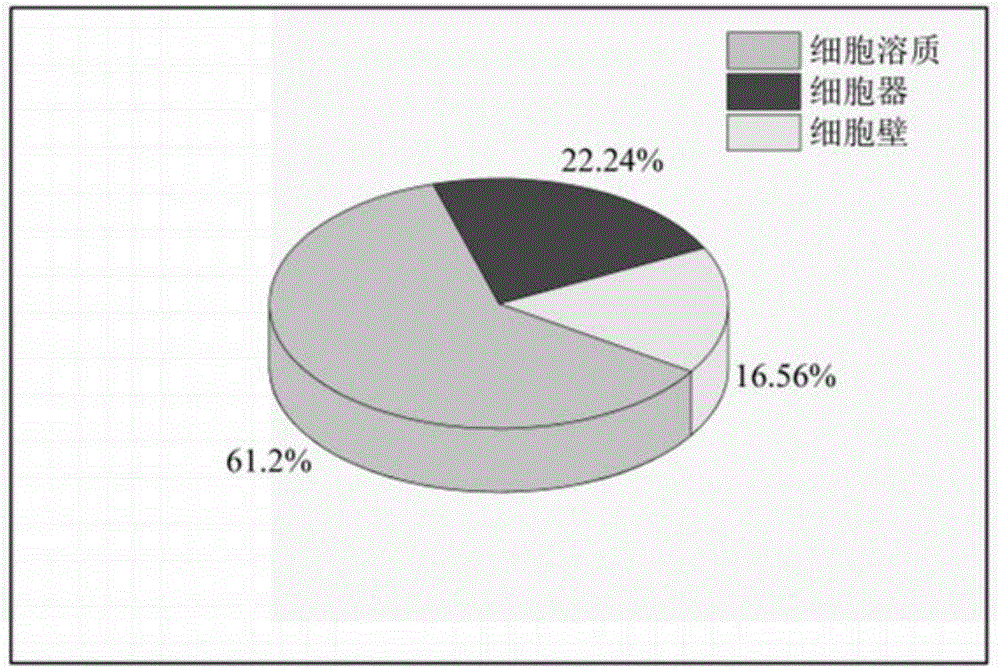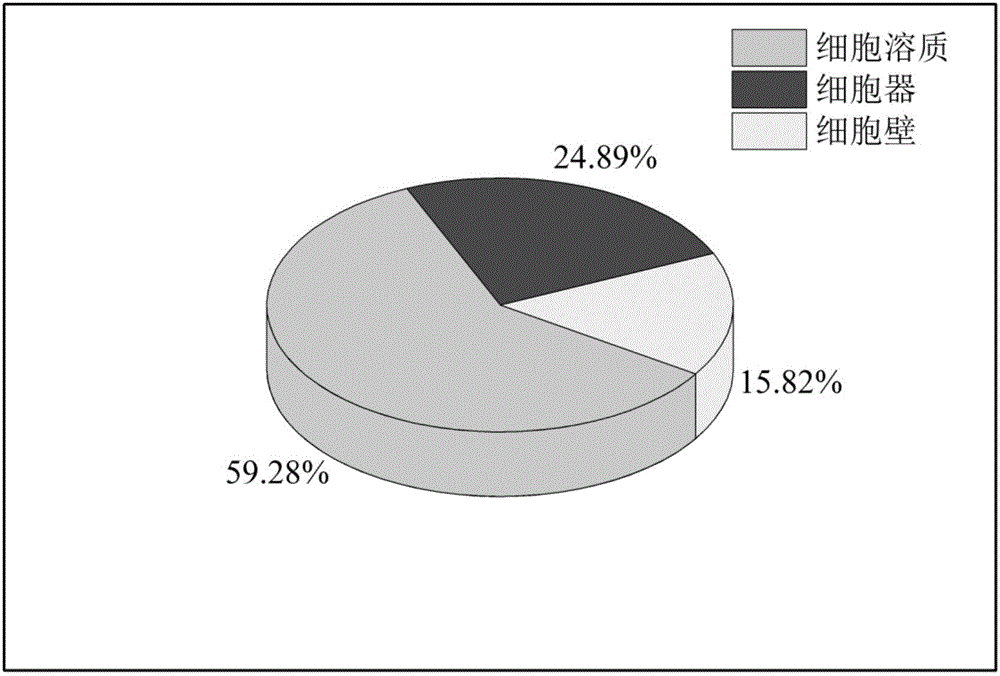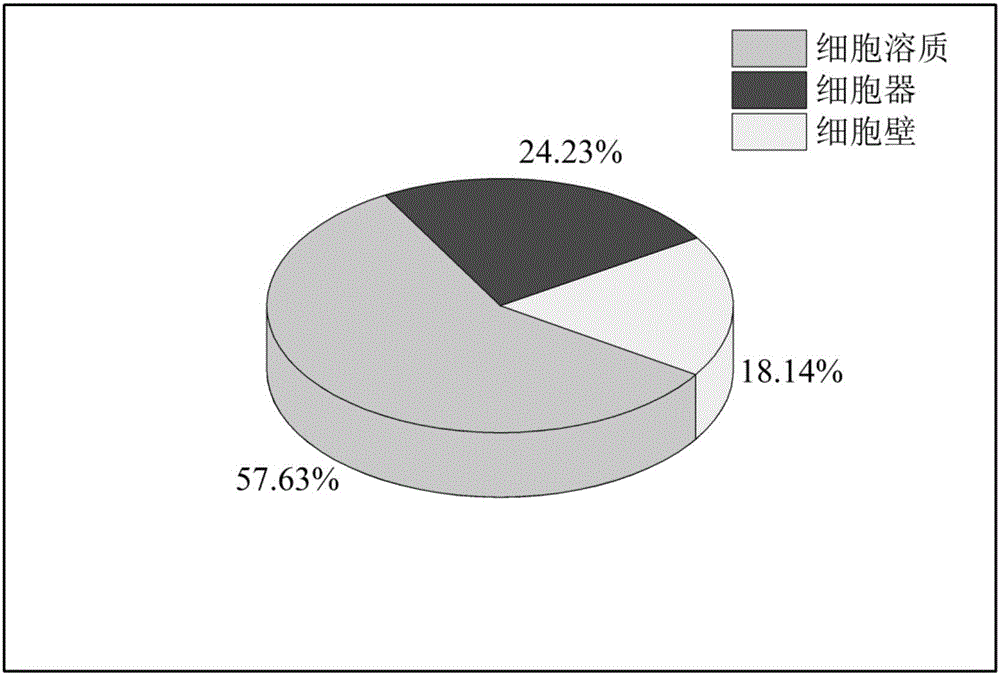Method for separating and extracting proline in sub-cells of plants
A technology of medium proline and extraction method, which is applied in material analysis by observing the influence on chemical indicators, analysis by chemical reaction of materials, organic chemistry, etc., can solve the problem of low stability of dithiothreitol. And other issues
- Summary
- Abstract
- Description
- Claims
- Application Information
AI Technical Summary
Problems solved by technology
Method used
Image
Examples
Embodiment 1
[0023] A method for separating and extracting proline in plant subcells, specifically carried out according to the following steps:
[0024] Step 1, take 0.5g rice seedling sample and grind it into a homogenate in 6ml of 3% sulfosalicylic acid in an ice bath;
[0025] Step 2, centrifuge the grinding liquid obtained in step 1 at 3000r / min at 4°C for 5min at low temperature; save the lower sediment a for later use, centrifuge the supernatant a at 10000r / min for 30min; supernatant b is the cell solution group Points were used to analyze proline; precipitation b was reserved for future use.
[0026] Step 3, dissolve and mix the precipitates a and b in step 1 with 5ml Tris-HCl solution, the Tris-HCl solution is 50mM Tris-HCl pH 7.5, 0.25mM sucrose, 1mM dithiothreitol;
[0027] Step 4, take 600 g of the homogenate obtained in step 3 and centrifuge at a low temperature of 4°C for 1 min at a speed of 2500 r / min, the sediment c is the cell wall part; the supernatant c is the organelle...
Embodiment 2
[0033] A method for separating and extracting proline in plant subcells, specifically carried out according to the following steps:
[0034] Step 1, take 0.4g rice seedling sample and grind it into a homogenate in 5ml of 3% sulfosalicylic acid in an ice bath;
[0035] Step 2, centrifuge the grinding liquid obtained in step 1 at 3000r / min at 4°C for 5min at low temperature; save the lower sediment a for later use, centrifuge the supernatant a at 10000r / min for 30min; supernatant b is the cell solution group Points were used to analyze proline; precipitation b was reserved for future use.
[0036] Step 3, dissolve the precipitates a and b in step 1 with 4ml Tris-HCl solution and mix evenly, the Tris-HCl solution is 50mM Tris-HCl pH 7.5, 0.25mM sucrose, 1mM dithiothreitol;
[0037] Step 4, take 600 g of the homogenate obtained in step 3 and centrifuge at a low temperature of 4°C for 1 min at a speed of 2500 r / min, the sediment c is the cell wall part; the supernatant c is the or...
Embodiment 3
[0043]A method for separating and extracting proline in plant subcells, specifically carried out according to the following steps:
[0044] Step 1, take 0.6g rice seedling sample and grind it into a homogenate in 5ml of 3% sulfosalicylic acid in an ice bath;
[0045] Step 2, centrifuge the grinding liquid obtained in step 1 at 3000r / min at 4°C for 5min at low temperature; save the lower sediment a for later use, centrifuge the supernatant a at 10000r / min for 30min; supernatant b is the cell solution group Points were used to analyze proline; precipitation b was reserved for future use.
[0046] Step 3, dissolve the precipitates a and b in step 1 with 6ml Tris-HCl solution and mix well, the Tris-HCl solution is 50mM Tris-HCl pH 7.5, 0.25mM sucrose, 1mM dithiothreitol;
[0047] Step 4, take 600 g of the homogenate obtained in step 3 and centrifuge at a low temperature of 4°C for 1 min at a speed of 2500 r / min, the sediment c is the cell wall part; the supernatant c is the organ...
PUM
 Login to View More
Login to View More Abstract
Description
Claims
Application Information
 Login to View More
Login to View More - R&D
- Intellectual Property
- Life Sciences
- Materials
- Tech Scout
- Unparalleled Data Quality
- Higher Quality Content
- 60% Fewer Hallucinations
Browse by: Latest US Patents, China's latest patents, Technical Efficacy Thesaurus, Application Domain, Technology Topic, Popular Technical Reports.
© 2025 PatSnap. All rights reserved.Legal|Privacy policy|Modern Slavery Act Transparency Statement|Sitemap|About US| Contact US: help@patsnap.com



